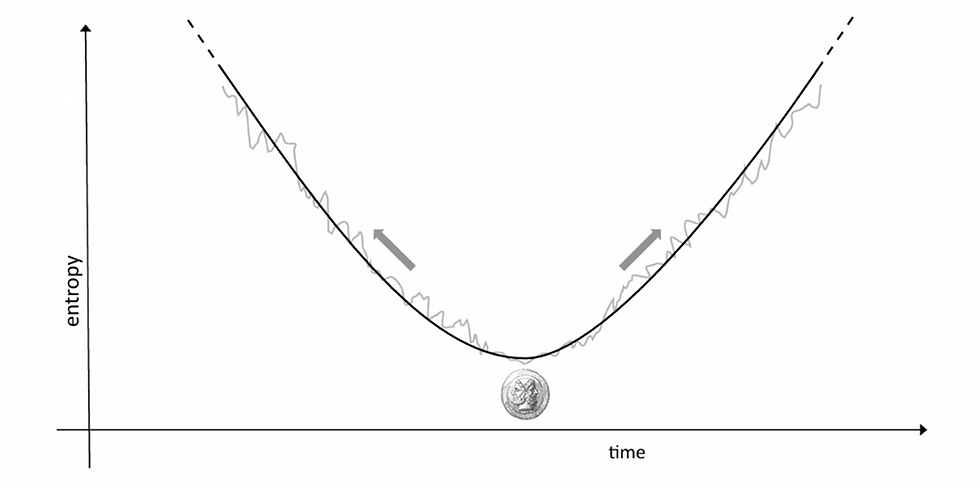The "Theory Of Everything": Quantum Gravity
- JYP Admin

- Aug 10, 2020
- 4 min read
Updated: Oct 8, 2023
Author: Hazal A. Kara

Introduction
There are four fundamental forces in our universe: the weak force, the strong force, electromagnetism, and gravity. The latter is different from the others in the sense that it is described as a consequence of the curvature of spacetime and the presence of mass in the mass. The Standard Model of particle physics (a classification system of all known elementary particles in our universe) unites three fundamental forces but is missing gravity (as described by general relativity). In order to fit gravity into the Standard Model, certain physicists are working on what is described as the theory of everything. The two major candidates for this are string theory and loop quantum gravity, which will be discussed in this article. The theory of everything will provide a comprehensive description of all possible interactions that can take place in our universe and significantly advance our understanding of it.
String Theory
String theory is one candidate for the “theory of everything” in which particles are modeled as one-dimensional “strings” rather than zero-dimensional point-like entities. The particular vibrations of these “strings” is what gives rise to particle properties such as mass and charge.
One of the main challenges in string theory is that it requires at least a total of 10 space-time dimensions in order for the math to hold up. No experimental results have shown signs of an additional six space dimensions as of yet. Consequently, string theorists propose that the three space dimensions we can observe are large whereas the other six are “curled up” and much harder to detect. These dimensions have been an important area of study for string theorists because understanding their geometry can lead to more information on how these string-like particles may vibrate (see Figure 1).

Figure 1: A Calabi-Yau manifold. These manifolds are used for compactifying dimensions.
Superstring theory is a version of string theory that encompasses both fermions and bosons (unlike bosonic string theory) while also incorporating “supersymmetry”, which basically states that every particle in the Standard model has a partner particle (see Figure 2). When superstring theory only has 10 spacetime dimensions, it separates into five subtheories: type I, type IIA, type IIB, SO(32) heterotic, and E8 × E8 heterotic. Fortunately, there is M-theory, which unifies these five; it requires seven additional spatial dimensions rather than six.

Figure 2: Standard Model particles and supersymmetric particles side by side.
How can string theory be tested? Evidence of supersymmetric particles through particle accelerators would definitely provide a strong case for string theory. In fact, many physicists had hoped that the Large Hadron Collider at CERN would show the existence of supersymmetry, but so far searches have come up empty. Aside from that, if a graviton (a hypothetical force-carrying elementary particle for gravity) were to be detected in a particle accelerator, this would also help the case for string theory.
Loop Quantum Gravity
Another candidate theory is called loop quantum gravity. It incorporates the concepts of space and time from general relativity into quantum mechanics [4]. In loop quantum gravity, both space and time are discrete and granular. Essentially, this means that there is an extent at which space cannot be divided any further.
In contrast to general relativity, quantum field theory suggests that space-time is a fixed background. Since loop quantum gravity is a theory that adopts general relativity, it assumes no fixed background (also known as background independence).
Where does the “loop” come in? Here, loop quantum gravity uses an idea from Faraday’s “lines of force.” These lines can be thought of as a quantum excitation of their respective field. When there are no charges, the lines close in on themselves and form a loop. In loop quantum gravity, the quantum gravitational field is described in terms of these loops. Space is made up of these loops.

Figure 3: A diagram on the fundamentals of loop quantum gravity.
It is important to note that loop quantum gravity is not a theory that unifies all forces, rather it explains the gravitational field in a way that fits quantum mechanics.
Loop quantum gravity faces the same obstacle as string theory in that there have been no experimental results that support it. One proposed method uses evaporating black holes. The radiation these black holes emit could provide quantum gravity signatures, separate from evidence of Hawking radiation. However, for such an experiment to take place, physicists would first need to actually detect evaporating black holes, which will be a difficult feat.
Conclusion
While much progress has been made in search for a “theory of everything”, there is still a whole lot more to research and discover. The two theories, string theory and loop quantum gravity theory, described in this article are the two main candidates that merge quantum mechanics and general relativity. However, they are difficult to test and there has been no experimental evidence of either one as of now. Perhaps one day there will be concrete evidence for one of them (or another less studied theory) that will revolutionize the field of physics.
References
Sutton, Christine. "Standard Model". Britannica.Com, https://www.britannica.com/science/Standard-Model. Accessed 8 Aug 2020.
Greene, Brian. "String Theory". Britannica.Com, https://www.britannica.com/science/string-theory. Accessed 8 Aug 2020.
"Supersymmetry". Home.Cern, https://home.cern/science/physics/supersymmetry. Accessed 8 Aug 2020.
Rovelli, Carlo. Loop Quantum Gravity. Physics World, 2003, http://cgpg.gravity.psu.edu/people/Ashtekar/articles/rovelli03.pdf. Accessed 8 Aug 2020.
Rovelli, Carlo. "Loop Quantum Gravity". Ncbi.Nlm.Nih.Gov, 1998, https://www.ncbi.nlm.nih.gov/pmc/articles/PMC5567241/. Accessed 8 Aug 2020.
Barrau, Aurelien et al. "Probing Loop Quantum Gravity With Evaporating Black Holes". Arxiv.Org, 2011, https://arxiv.org/abs/1109.4239. Accessed 9 Aug 2020.
Figure References
Figure 1: "Calabi-Yao Manifold". En.Wikipedia.Org, https://en.wikipedia.org/wiki/Calabi%E2%80%93Yau_manifold. Accessed 8 Aug 2020.
Figure 2: Francis, Matthew. "A Sort Of Particle-Free Supersymmetry Found In Exotic Materials". Arstechnica.Com, 2014, https://arstechnica.com/science/2014/04/a-sort-of-particle-free-supersymmetry-found-in-exotic-materials/. Accessed 8 Aug 2020.
Figure 3: Merali, Zeeya. "Theoretical Physics: The Origins Of Space And Time". Nature.Com, 2013, https://www.nature.com/news/theoretical-physics-the-origins-of-space-and-time-1.13613. Accessed 8 Aug 2020.

.png)




Comments